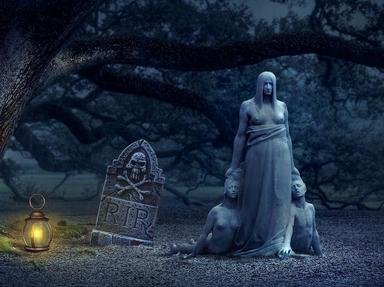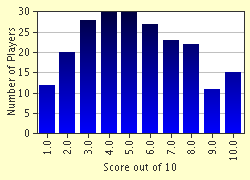Quiz Answer Key and Fun Facts
1. "The Bride of Corinth" is an erotic, macabre tale of a young woman sworn to chastity in her short life, only to return from the grave to find a husband - perhaps for all time. What giant of European verse wrote this intriguing classically-based ballad?
2. In 1797, one of the giants of English verse began a lengthy poem with vampiric overtones. He added a second section in 1800, and the poem, titled "Christabel" circulated in manuscript copies among the English-speaking intelligentsia for over a decade. The poet finally published "Christabel" in 1816, along with another poem he could not finish, "Kubla Khan". Who was this eccentric, opium-driven dean of Romantic poetry?
3. "Christabel" was one of the poems and stories read by Lord Byron, Percy Bysshe Shelley, and Mary Wollstonecraft Shelley on their Swiss vacation in 1816. From these fantastic readings came a literary dare from Byron for all the young bohemians to write a ghost story. The best known story from this retreat was Mary Shelley's "Frankenstein", but the challenge would birth the first fictional (as opposed to folkloric) vampire story in English as well. Byron began a vampire story on this holiday, then put it aside and never finished it. Years later, after a falling out, Byron's physician (who had also been on the Swiss excursion) would take up the theme and write "The Vampyre", a thinly disguised play on Byron's Helenophile lady-killer image. Who was this doctor turned pioneering Gothic author?
4. Another great romantic poet put vampire imagery to good use in two works, "La Belle Dame sans Merci" and "Lamia". In both of these, the vampire is a seductress who drains the vitality of strong young men. Ironically enough, this great poet would himself waste away and die at a young age from tuberculosis, the effects of which were sometimes blamed on vampirism. Who was this wordsmith who would come to resemble the vampire-stricken knights of which he wrote: "Pale warriors, death pale were they all"?
5. The first substantial vampire fiction that approximated a novel was a long running serial (popularly known as a "penny dreadful" or a "penny blood") published between 1845 and 1847. When finally compiled into book form, it stretched to 868 pages over 220 chapters. What was the name of this Gothic epic?
6. The 1847 short story "Family of the Vourdalak" put a unique twist on the vampire motif. It featured a family patriarch who goes off into a snowstorm and returns profoundly changed. What author, who shared a surname with a well-known contemporary, was the author of this tale?
7. An anonymous vampire story appeared in the English magazine "Odds and Ends" in 1860. Translated from German, it drew upon "The Vampyre" in having its hero travel to an exotic land and in making its villain grotesque yet cultivated, but may well have introduced the convention of an older advisor to the protagonists who knows how vampires should be fought and defeated; this convention would grow to fruition in the vampire classic "Dracula" with the character of Van Helsing. What was the name of this piece?
8. One of the most pleasant reads among the classic vampire stories is an 1872 novella by J. Sheridan Le Fanu. Drawing thematically on ""Christabel", this work tells the story of a young gentlewoman left in the care of an aristocratic family. Periodically, she seems to change into a cat and drink the blood of the family's maiden daughter while she lies in bed at night. What intriguing work of short fiction is this?
9. Though this may be more of a historical curiosity than a substantive contribution to vampire literature, one late Victorian Nobel laureate threw his hat in the vampiric ring when he wrote a poem to accompany Pre-Raphaelite painter Edward Burne-Jones' 1897 painting "The Vampire". Who was this author whose name has been forever linked to the nationalistic grandeur of the British Empire?
10. Though they can be appreciated as fine works in their own right, many of the poems and stories in the previous questions are notable for their influence on the dominant text in vampire literature: Bram Stoker's "Dracula". Outside of other creative works, however, many scholars believe that Stoker was also influenced by his contact with notable individuals of the period. Which of these late-nineteenth-century luminaries has not been cited by scholars as an influence on Bram Stoker?
Source: Author
stuthehistoryguy
This quiz was reviewed by FunTrivia editor
Bruyere before going online.
Any errors found in FunTrivia content are routinely corrected through our feedback system.

